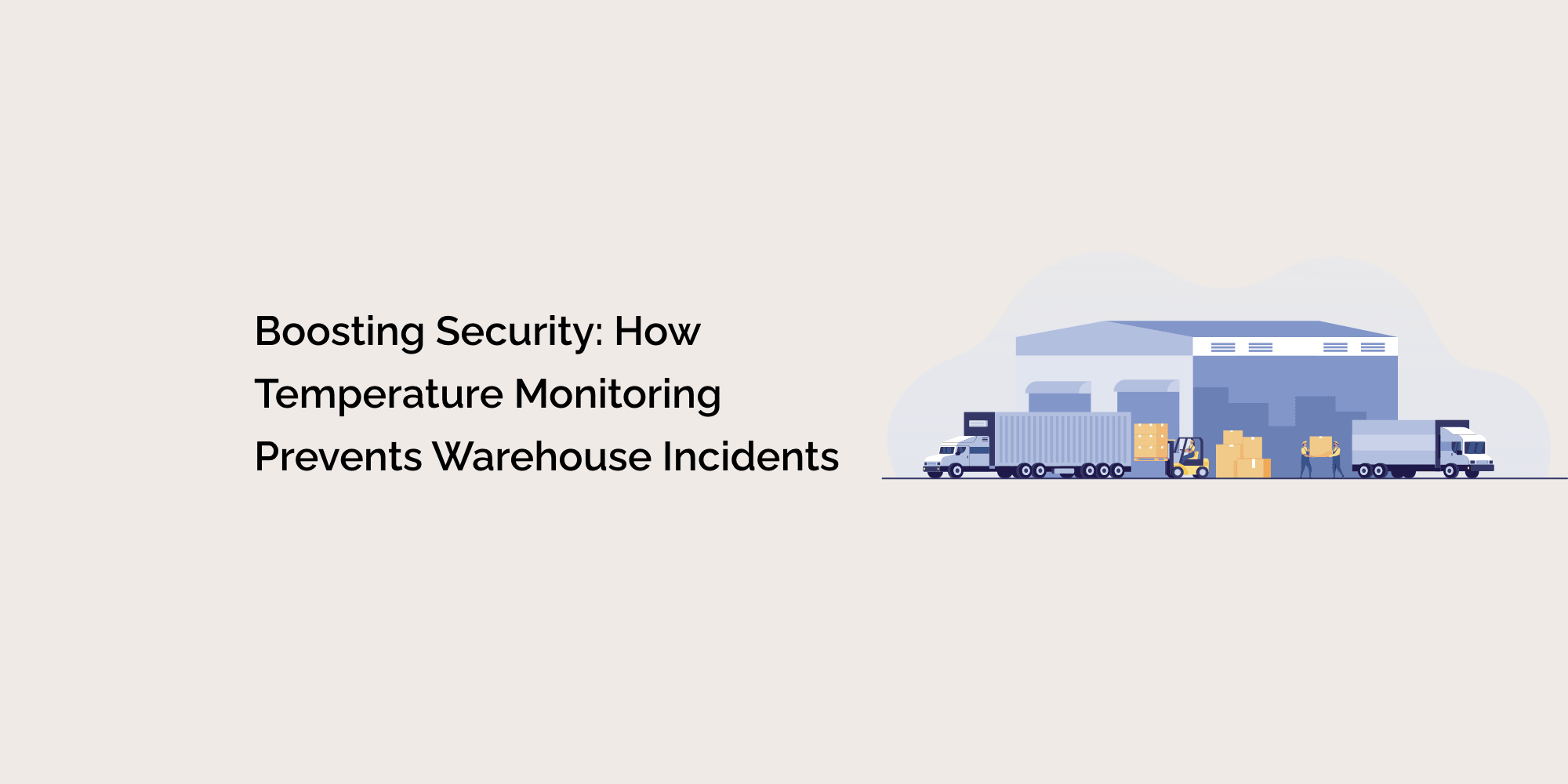Warehouses play a critical role in the global supply chain, serving as crucial storage and distribution hubs for a wide range of products. However, warehouses are not immune to incidents that can result in damaged goods, financial losses, and compromised customer trust. One such incident that poses a significant threat to warehouse operations is temperature fluctuations, which can impact the quality and safety of stored items, particularly temperature-sensitive goods.
In this blog, we will explore the importance of temperature monitoring in preventing warehouse incidents and highlight how this technology can boost security, enhance operational efficiency, and protect valuable inventory from potential harm.
Understanding the Risks of Temperature Fluctuations
Temperature-sensitive goods, including pharmaceuticals, food items, electronics, and chemicals, require strict temperature control to maintain their efficacy, freshness, and stability. When stored or transported outside the recommended temperature range, these goods may suffer irreversible damage, rendering them unsuitable for use or sale.
Common risks associated with temperature fluctuations in warehouses include:
a. Product Spoilage:
Perishable goods such as fresh produce, dairy products, and frozen foods are highly susceptible to spoilage when exposed to improper temperature conditions.
b. Reduced Shelf Life:
Many consumer products, including certain pharmaceuticals and cosmetics, have limited shelf lives that can be significantly shortened by temperature variations.
c. Loss of Efficacy:
Temperature-sensitive medications and vaccines can lose their potency and effectiveness if exposed to extreme temperatures.
d. Equipment Malfunctions:
Electronic components and devices may experience performance issues or permanent damage when exposed to temperature extremes.
e. Regulatory Compliance:
Industries like pharmaceuticals and healthcare must adhere to strict temperature regulations, and non-compliance may lead to legal consequences.
Importance of Continuous Temperature Monitoring
Traditional temperature monitoring methods, such as manual checks or periodic inspections, are not sufficient to address the dynamic nature of temperature fluctuations in warehouses. Continuous temperature monitoring is crucial for identifying and addressing potential issues proactively.
a. Real-time Alerts:
Temperature monitoring systems equipped with sensors send real-time alerts to warehouse staff and management when the temperature deviates from the specified range. This enables immediate action to be taken to prevent further damage.
b. Data Logging and Analysis:
Continuous monitoring provides valuable temperature data that can be logged and analyzed over time. This historical data allows warehouse managers to identify patterns, detect recurring issues, and optimize storage conditions.
c. Compliance Documentation:
Many industries require documentation of temperature conditions during storage and transportation. Continuous monitoring systems automatically generate reports for regulatory compliance.
Preventing Incidents with Remote Monitoring
Warehouse incidents can occur at any time, even when staff is not present on-site. Remote temperature monitoring offers an additional layer of security and enables swift action regardless of the warehouse staff's physical location.
a. Mobile Applications:
Implementing mobile applications that connect to the temperature monitoring system allows warehouse personnel to receive real-time updates and respond promptly to critical alerts.
b. Cloud-based Solutions:
Cloud-based temperature monitoring systems provide access to data from any internet-connected device, ensuring 24/7 visibility and control over warehouse temperature conditions.
c. Remote Troubleshooting:
In the event of an incident, remote monitoring enables technicians to diagnose and troubleshoot temperature control equipment without physically being on-site, minimizing downtime and reducing costs.
Early Detection of Equipment Malfunctions
Temperature monitoring systems not only safeguard the stored goods but also play a crucial role in identifying potential equipment malfunctions that could compromise warehouse security.
a. Sensor Health Monitoring:
Some advanced temperature monitoring systems can monitor the health of individual sensors and detect any abnormalities or failures. This early warning system allows for proactive sensor maintenance or replacement.
b. Anomaly Detection:
Temperature data analysis can identify unusual trends that may indicate equipment malfunctions, such as cooling system inefficiencies or sensor calibration issues.
c. Predictive Maintenance:
By continuously monitoring equipment performance, warehouse managers can adopt predictive maintenance practices, reducing the risk of unexpected breakdowns and the subsequent loss of temperature control.
Integration with Warehouse Management Systems (WMS)
To maximize the efficiency and security of temperature monitoring, integration with the Warehouse Management System (WMS) is highly beneficial.
a. Real-time Inventory Tracking:
Integrating temperature data with the WMS allows for real-time tracking of temperature-sensitive inventory, ensuring that products are stored appropriately and retrieved promptly.
b. Automated Workflows:
The integration of temperature monitoring data can trigger automated workflows for temperature control, such as adjusting cooling systems or initiating corrective actions when necessary.
c. Enhanced Decision-making:
Warehouse managers can make data-driven decisions using real-time temperature information combined with other warehouse performance metrics.
Customized Alert Thresholds and Response Protocols
Not all products have the same temperature requirements. To optimize temperature monitoring, warehouses should establish customized alert thresholds based on the specific needs of the goods stored.
a. Categorize Products:
Categorize inventory based on temperature sensitivity and set appropriate alert thresholds accordingly.
b. Tiered Response Protocols:
Implement tiered response protocols for different alert levels. For critical goods, a higher level of urgency and response should be maintained.
c. Emergency Preparedness:
Develop contingency plans for worst-case scenarios, such as power outages or cooling system failures, to minimize the impact on inventory and business operations.
Conclusion
Temperature monitoring is a vital tool in preventing warehouse incidents and protecting temperature-sensitive goods from potential harm. By employing continuous monitoring, remote accessibility, early detection of equipment malfunctions, integration with Warehouse Management Systems, and customized alert thresholds, warehouses can boost security, maintain regulatory compliance, and enhance operational efficiency.
Investing in advanced temperature monitoring technology demonstrates a commitment to product quality, safety, and customer satisfaction. Ultimately, warehouses that prioritize temperature monitoring contribute to a more resilient and secure supply chain, minimizing risks and maximizing the value of stored inventory.








